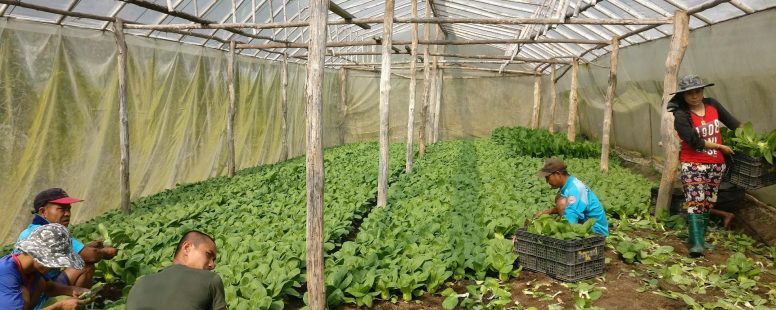Motivations to join REDD+ among the Karen of Muang Ang, Chiang Mai
Written by Alejandro Huete, Chiang Mai University
Driving on a dusty road through the forests of Doi Inthanon (the tallest mountain in Thailand), I didn’t know what to expect. I could speak a good bit of Thai, and I had a close friend come along as a translator, but we were going to a Karen village, would we be able to communicate? I was heading towards the village of Muang Ang, a Karen village which the Department of National Parks (DNP) has allowed to continue living in the area. I was interested in this village because of a DNP REDD+ pilot project that I heard of and luckily was still in progress. I wanted to understand how this village viewed the environment and climate change, and if this project had influenced this view.
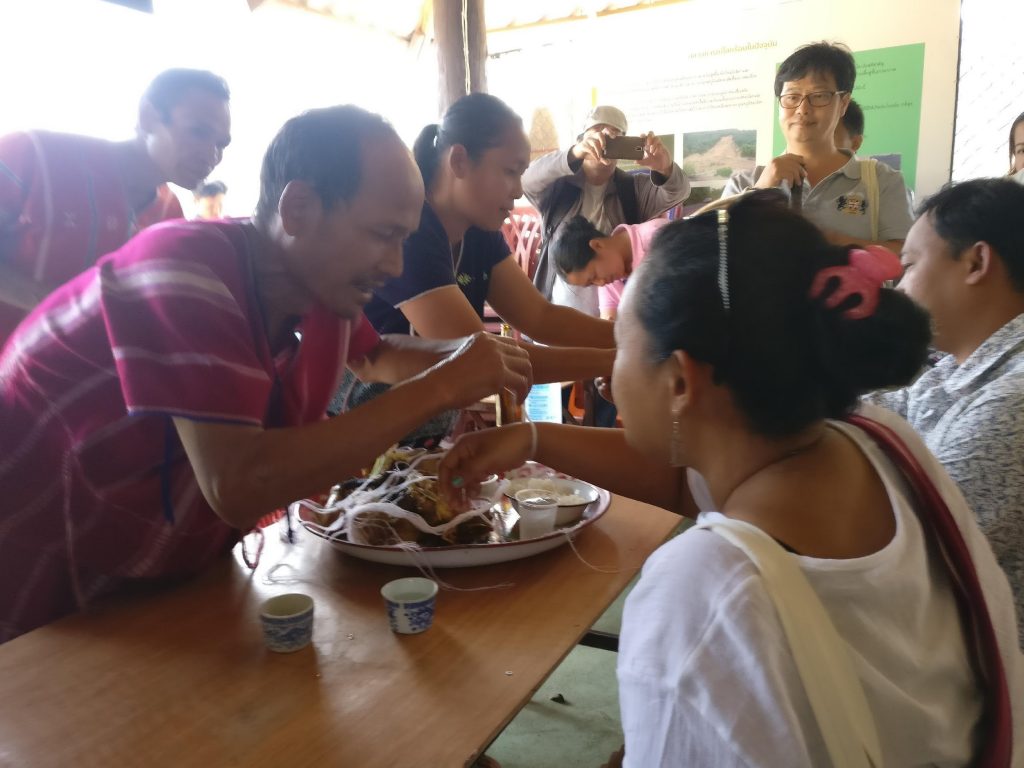
Traditional Karen ceremony
Reducing emissions from deforestation and forest degradation (REDD+), as the name suggests, has the objective of reducing carbon emissions through the prevention of deforestation and forest degradation. To do this, projects incentivize forest and agricultural communities to conserve and/or regenerate surrounding forests. Generally, these incentives come in the form of carbon credits that are determined by calculating how much carbon has been sequestered by specified trees. These carbon credits can then be sold on an international carbon market to potential buyers. The village of Muang Ang and the Doi Inthanon National Park decided to initiate a pilot project based on this model.

Muang Ang REDD+ Meeting Ramada
Although we had never met, the villagers and the headman were quick to show their hospitality. It was decided that I would stay at the headman’s house and be provided with a scooter to use during my time there. In return, my friend and I would teach English at the local primary school. I quickly settled in and decided that it would be better to build up friendships among the community before diving into my research. Research that I would soon find out, required a rethinking of my original approach.
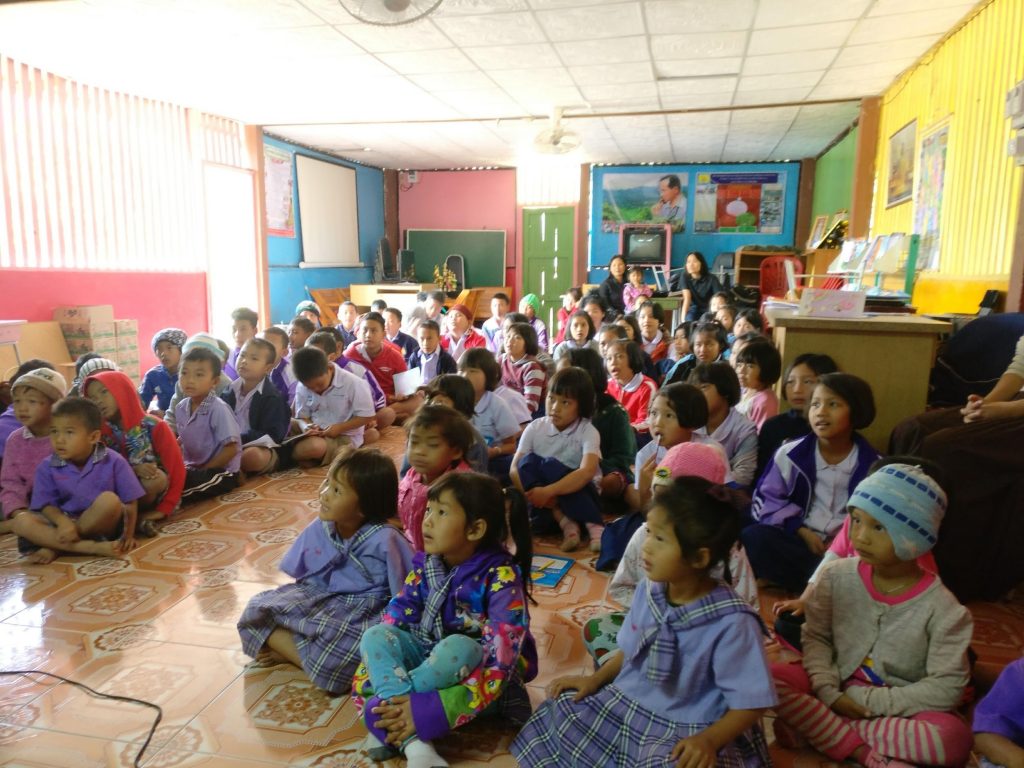
Muang Ang primary school students
So I began to do what they do, attempting to help as much as I could without getting in their way. They are a very busy and hardworking people, waking up very early every morning to work in their greenhouses and finishing very late after packaging their product to sell to urban organic consumers (they do not eat what they cultivate in the greenhouses).
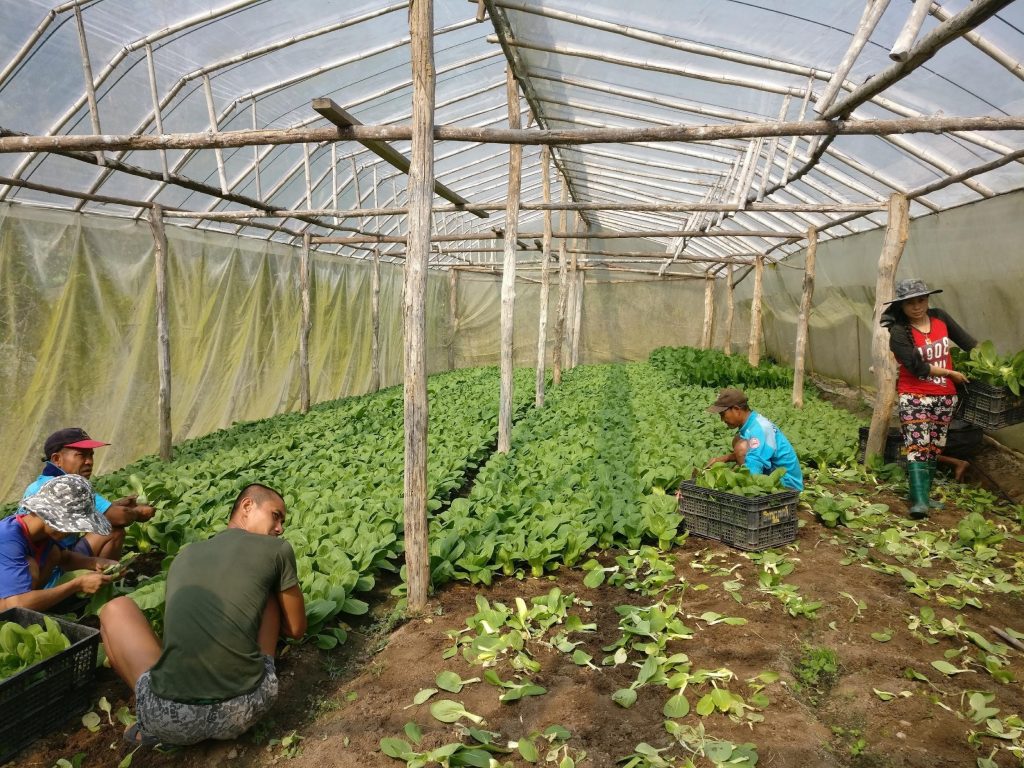
Muang Ang organic greenhouse
I soon learned that the REDD+ project was not on the minds of many of the villagers. Only a few villagers that were selected by the community to be on the Muang Ang REDD+ team knew anything about the project, everybody else only knew that some recycling bins, 2 greenhouses and a small rice mill were donated, other than that, not too much. However, many villagers were quick to give their opinion on global warming and its causes as well as whether their community can live sustainably within the forest. For they are Karen, protectors of the forest.
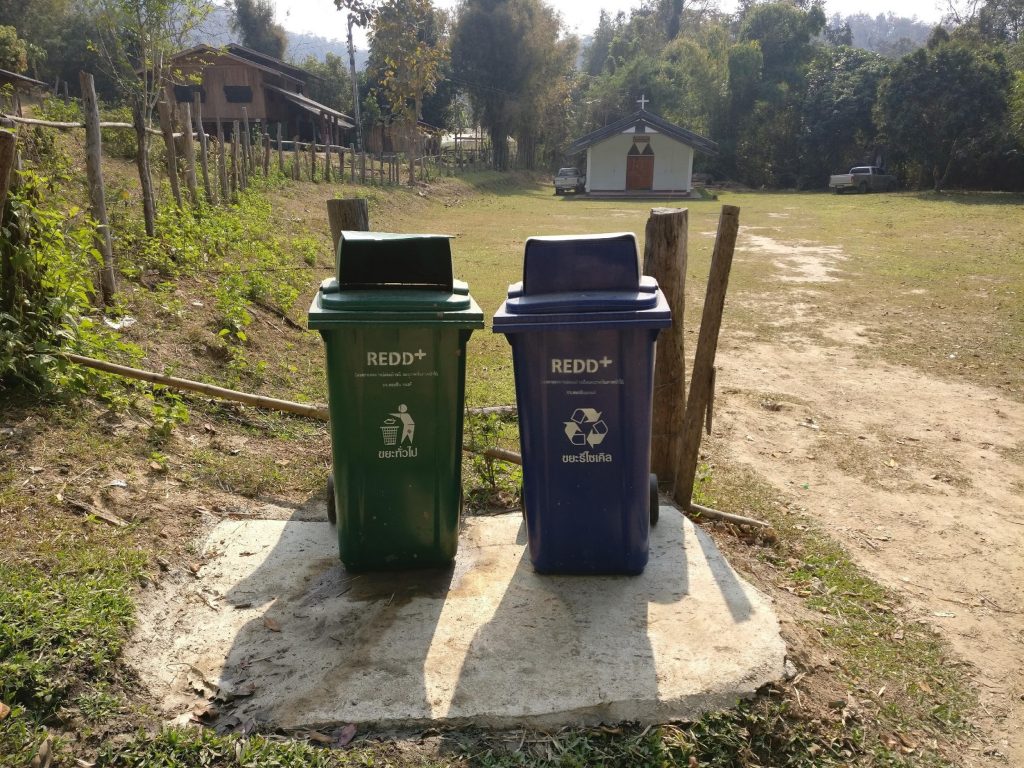
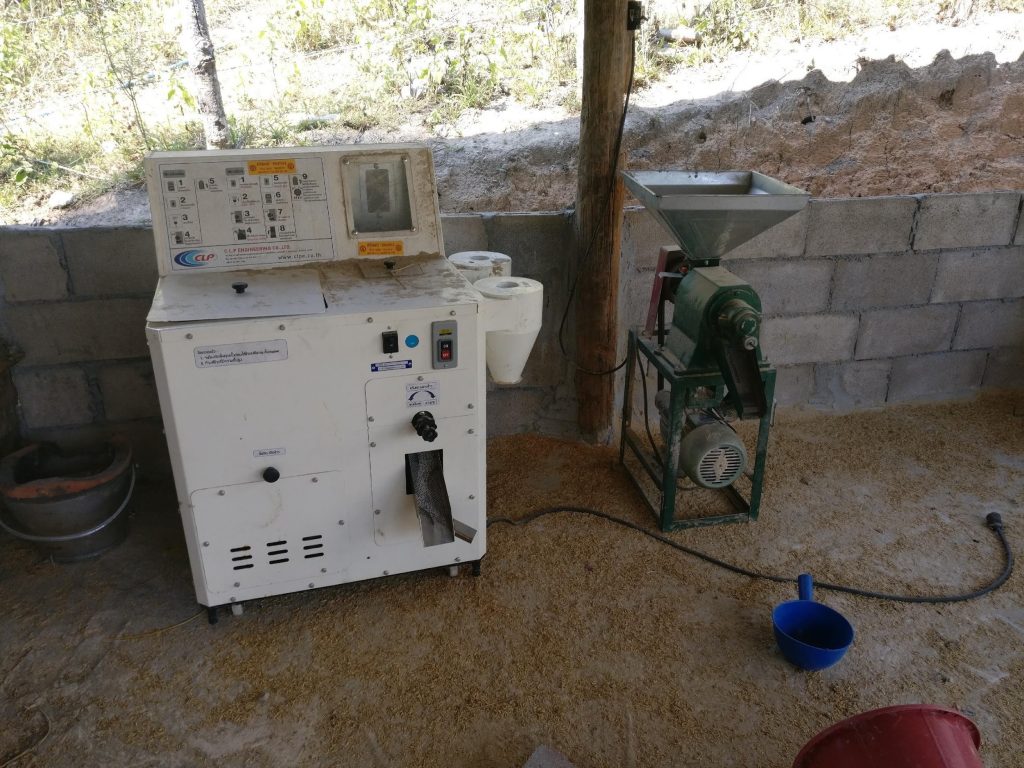
Donated Recycling Bins and Rice Mill
After a month of fieldwork in the village, talking to the Muang Ang and the Doi Inthanon National Park REDD+ teams, village elders and others, I found that the spatial and legal set-up of the REDD+ pilot plots, did not interfere very much with the livelihood practices of the villagers. The project consists of 15 plots measuring 1,600 square meters scattered around the surrounding forest. Villagers continued to practice both legal and clandestine activities in the forest, and most stated that the most burdensome part of the project, at least for those on the REDD+ team, was having to go to long meetings that took time away from more important activities.
Another important aspect of this project was that the DNP REDD+ team chose not to educate the community about the financial incentives and instead focused on the forest’s ‘non-carbon benefits’ (biodiversity, ecosystem maintenance, cooler temperatures, etc.). They brought up past cases in which communities were promised payments but then were frustrated to discover that there were no interested buyers on the international carbon market. Almost every villager I interviewed had never heard of the idea of carbon trading.
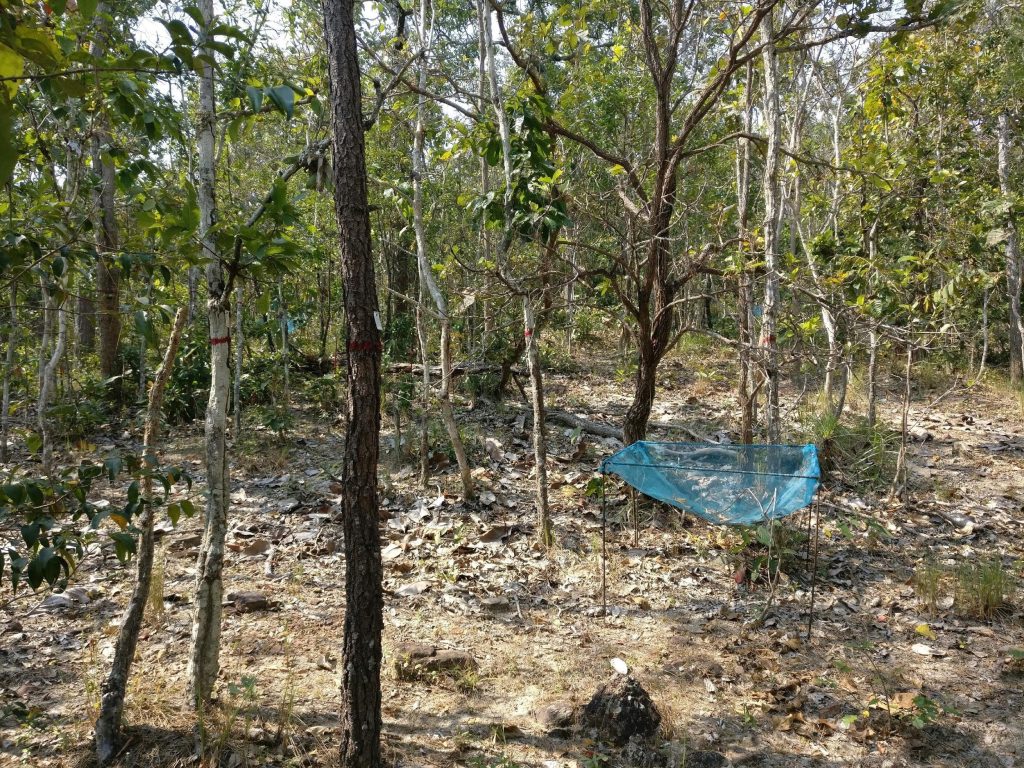
1 of the 15 REDD+ Pilot Project plots
At this point, it seemed that the more pressing questions were how and why this community decided to participate in the REDD+ project. In regards to their ‘traditional’ view of the environment, most had already converted to Christianity a century ago, as well as collaborate with the DNP for at least the past 20 years. The ‘traditional’ view of the environment with their spirits and local customs did not seem to be as prevalent as I thought it would be. However, they still believed that as Karen, they are supposed to live sustainably with the forest, but they did so using the ‘modern’ practice of organic greenhouse cultivation and following the rules set in place by the DNP.
So then why are they participating in this project if they are already engaging in sustainable livelihood practices and if there are no financial rewards? The most common reasons were to come up with scientific proof and expand their networks in order to demonstrate to lowlanders and the Thai government that they do indeed live sustainably within the forest. There was still doubt that one day, the government could force them to relocate. By having scientific proof and an abundance of international and national university academics, NGOs and various government officials within their network, many villagers I interviewed stated that they felt more secure.
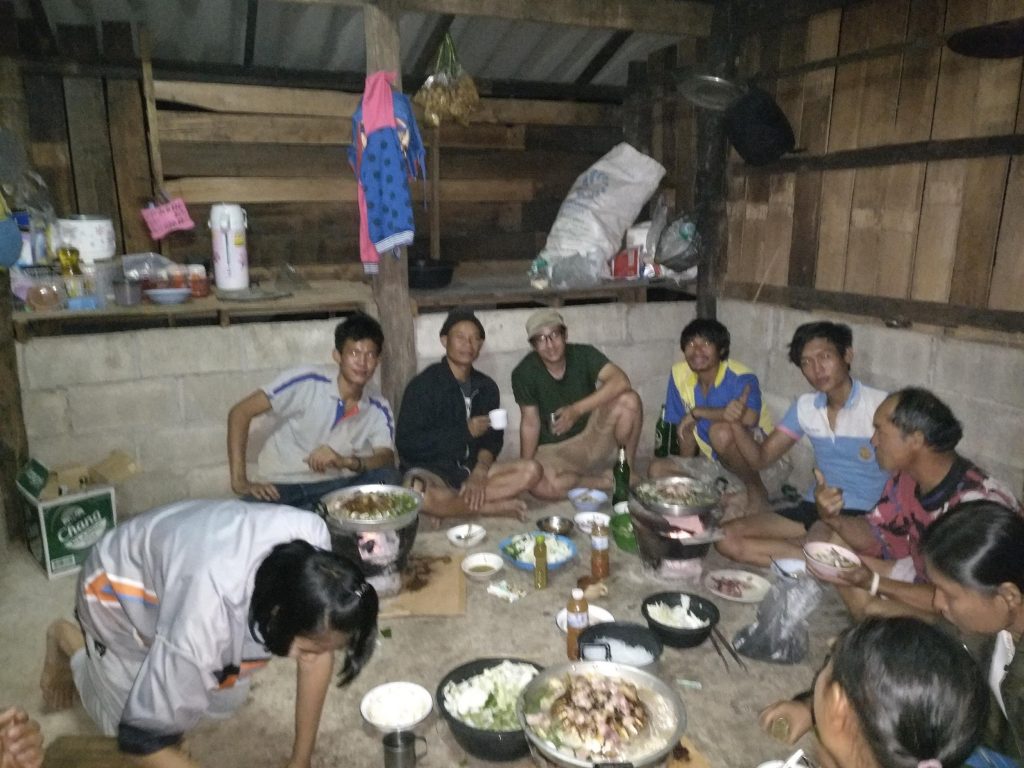
Farewell barbeque at friend’s house

